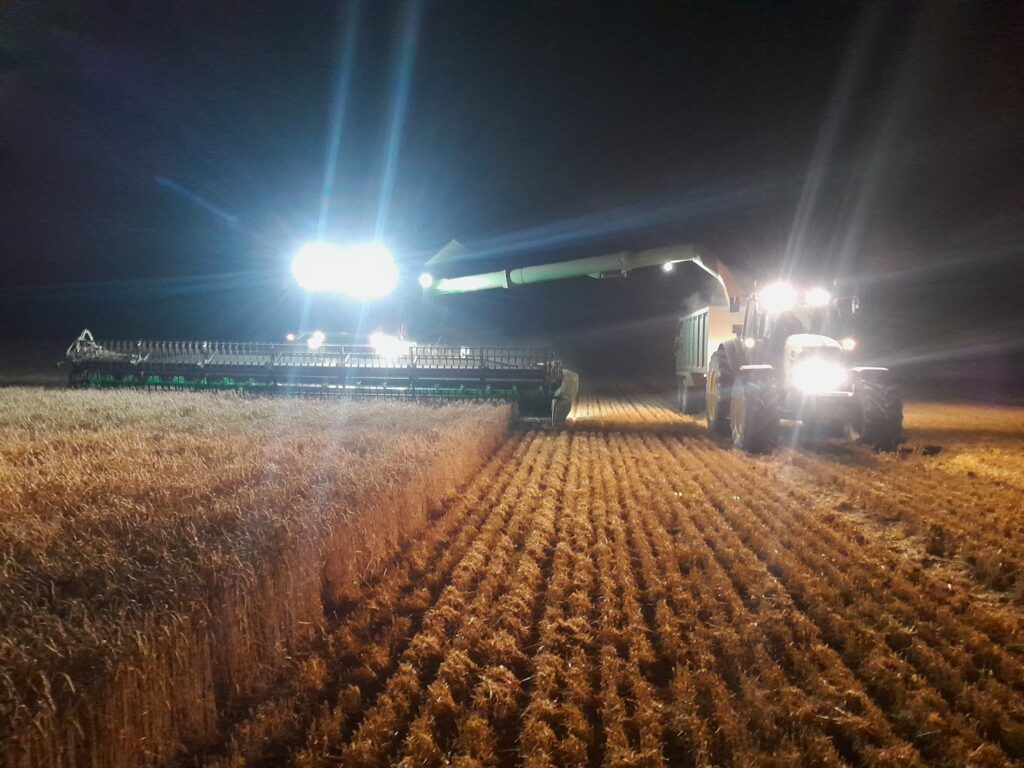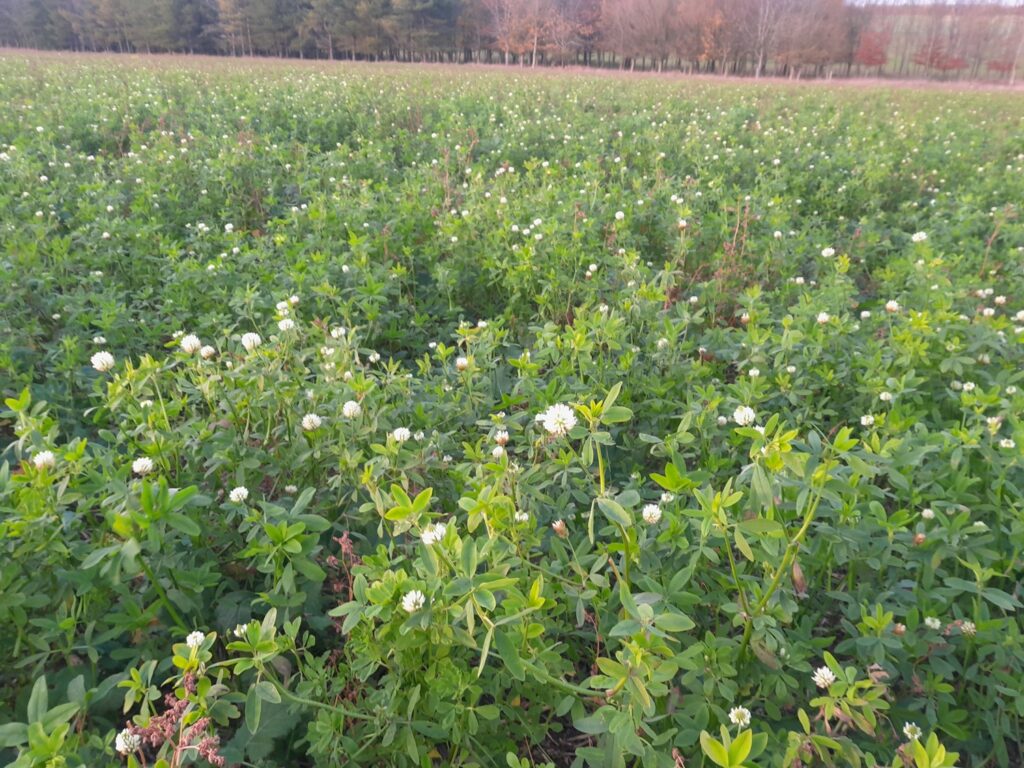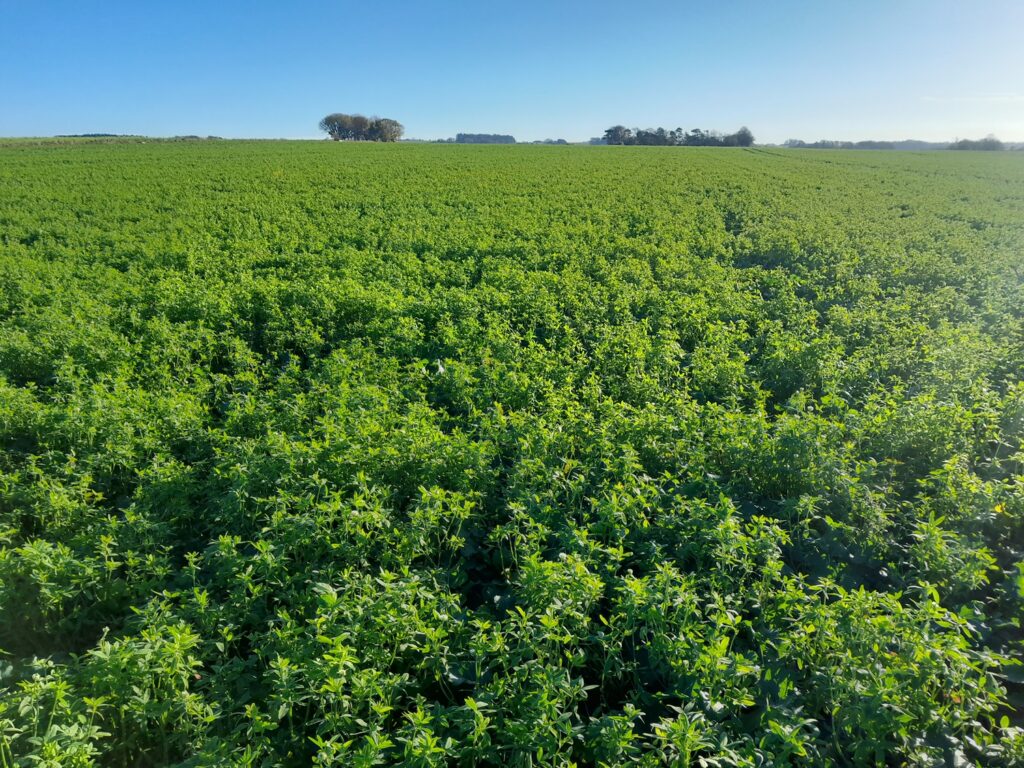Dec 2023
I had an interesting experience last week when out crop walking on a glorious sunny afternoon. Was firstly walking through chest high flowering cover crops which were full of white, yellow and purple flowers, then moved into Oilseed rape crops dwarfed and semi hidden from view by a thick stand of berseem clover companion plants just starting to come into flower.
Suddenly realised that I had butterflies in my stomach along with a slight fizzing sensation, exactly the same bodily reaction that I would get as a teenager if I bumped into a girl I fancied in the school corridor. Strange the effect regenerative agriculture can have……. ( cant say industrial agriculture ever got me that excited!)
Every year seems to be different re-cover crop germination and growth. With good soil moistures this year was expecting bumper crops but most have been disappointing apart from the early August drilled ones. Later drillings have never got away properly apart from the headlands on some ( usually put better headland growth down to the double rolling effect in dry seasons).
Poor cover crops are massively disappointing as it is a missed opportunity to really give soil health a great boost. Especially galling considering we have a relatively high seed cost with our multi species covers and also go some effort to establish them properly. (Drill large seeds first and then broadcast small seeds behind drill with avadex applicator, followed by Cambridge rolling the whole lot in).
As previously mentioned in the last report, we carried out some N efficiency tramline trials for ’22-’23 crop year. Results were a bit inconclusive but I can report some summarised results ( With the caveat that these should be treated as anecdotal results not replicated ,statistically checked results.)

QLF BOOST : ( Wheat ) Control strip was 190 Kg/Ha N. Boost was applied at various rates on strips that had either 160,170 or 190 Kg/Ha N. All Boost treatments were higher yielding than the control ,with the highest yielding strip being 30L/Ha Boost + 190 N. 60L/Ha Boost + 160 N also yielded above the control.. Trial seems to show that it is possible to increase yield of Wheat by applying Boost or maintain yield by replacing some N with Boost.
Blue N : ( Wheat and spring Barley ) Blue N was applied to winter wheat strips which had 190 or 170 Kg/Ha N and to Spring barley which had 107 Kg/Ha N. In wheat the Blue N seemed to increase the yield very slightly on both strips compared with the control strip with just 190KG/Ha N. There was no noticeable effect with using the Blue N in Spring Barley.
SR3 : ( wheat ) SR3 was applied to Strips which had received 170 or 190 Kg/Ha N . SR3 seemed to increase yield very slightly on both treatments compared with control of just 190 KG/Ha N
Amide N : ( Wheat ) Amide N was applied as a foliar spray ( equal to an N rate of 8 Kg/Ha ) on strips which had received 170, 180 or 190 Kg/Ha solid N. The Amide N spray appeared to have a slight positive effect .
Have not calculated any cost /Benefit ratios as the trials were not accurate enough to do this confidently but gut feeling is that I need to look at them all again for a second year .
I am excited to try layering Boost + Blue N + SR3 + R-Leaf on top of each other to see if benefits are additive and then assess the cocktail of treatments against various N rates to see if it could be a viable way of maintain yields with less artificial N ( Trouble is not sure I have a big enough field to run the trial ! )

Cannot really finish my report without commenting on the wet autumn weather.
Our plan had been to do most of the planting with the Horizon disc drill as a way of trying to minimize soil movement and start to make in-roads into reducing our blackgrass burden on the farm.
I had already learnt the lesson last year that disc drills don’t work in the wet on silty clay loams but luckily we were able to switch to the 10m kockerling tine drill when conditions deteriorated and we managed to get everything planted with minimum soil damage.
Having the ability to switch between disc and tine drills massively de stresses planting operations in a minimal soil movement regen ag system.
We also took advantage of the two drills, trying a new (to us) method of establishing OSR and companion crop on one of our OSR fields this summer. In early August we used the Kockerling to plant our companion crop mix of Buckwheat, Berseem Clover and Fenugreek. We followed this by Cambridge rolling and left it to germinate and grow. 10 days later we drilled the OSR into the growing companion crop using the Horizon disc drill ( This caused minimal damage to the companion crop and enabled us to dispense with the need for rolling as the closing press wheels on the Horizon can be pressurised to do a great job firming the soil above the seed. This was not a replicated trial but giving the companion crop a head start did provide a good cover to ‘hide’ the OSR in its early establishment phase and cabbage stem flea beetle damage was negligible( field was next to a field which had OSR in for harvest ’23 and would normally expect damage/crop failures if new season OSR adjacent to previous seasons OSR).

One lesson we did learn this autumn (every day is a school day!) is not to roll behind the disc drill if heavy prolonged rainfall is forecast after drilling.( I realise rolling is not strictly necessary anyway behind a disc drill if slots closed properly but we usually do it anyway to max out effectiveness of pre- ems against Blackgrass. ) This year we had a severe crop loss on end headlands on some fields caused by the double rolling effect grinding the soil surface into a fine powder followed by heavy rain causing capping and waterlogging which negatively affected germination of the wheat seeds.


